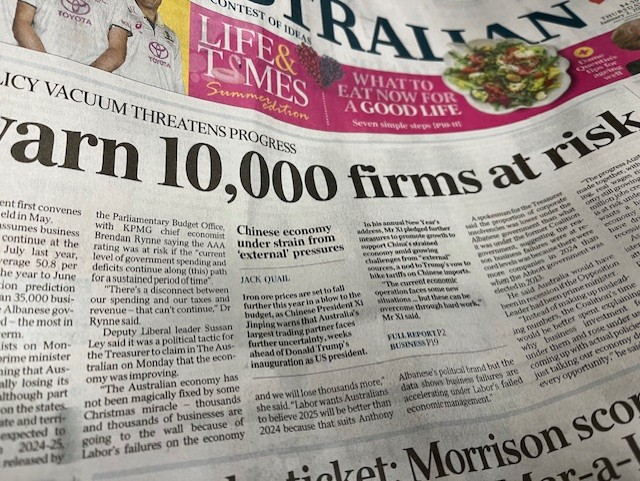A rather dramatic headline, political only, warning that an extra 10,000 businesses will go under by June 2025 might best be seen only as a Pharmacy Guild type hype for political purposes, not worth responding to.[1] But perhaps it bears some simple comment, at least. Here are four points, there may be others.
Context – 3.4 million companies in Australia compared to around 2 million in 2012
As to the present numbers, and as ASIC correctly explains,[2] while the more than 11,000 companies entering external administration in 2023-24 was slightly higher than prior peaks seen in 2011–12 and 2012–13, it is proportionately smaller because there are now nearly 3.4 million companies in Australia compared to around 2 million in 2012. The current ratio of companies entering external administration compared to the number registered (0.33%) is still well below 2012-2013 (0.53%) levels. On those ratios, there should be 18,000 corporate insolvencies each year, not 11,000.
But if there were 10,000 more insolvencies in the time stated, that would be quite remarkable.
Tip of the iceberg
The 10, or 20,000 insolvent companies on the books might in fact only be the tip of the iceberg. There is enough research to show that for every company entering external insolvency administration, 5 or more simply disappear through a default deregistration process – creditors, employees and all. Government policy in 2016 accepted that the ILRA reforms would have that outcome. The 2023 PJC Report has recommended that these disappearing companies be examined.
Hence, if there were an extra 10,000 failed businesses, only 1,700 or so might in fact go through a formal insolvency process.
We need the numbers
From an economics perspective, that 1,700 might be too inconsequential within the 3.4m companies in Australia.
Insolvency process is a way of dealing with less efficient businesses, either by way of their disposal, or rehabilitation if possible. The promotion of efficiency and productivity through fair market competition is beneficial to the economy; conversely the preservation of under-performing perhaps zombie companies is deleterious, including to their competitors. In particular, businesses that seek to survive by non-payment of tax are taking an unfair competitive advantage over efficient businesses. The large amount of unpaid business tax suggests that many businesses might, in fact, best be liquidated.
Numbers of most small business insolvencies are flat
Finally, most small businesses, which comprise 97% of all businesses, are not companies at all but are sole traders or partnerships.[3] Their insolvency is governed by the Bankruptcy Act. While their numbers were predicted to increase, they have largely plateaued, at around 12,000 per year, well below the 37,000 post GFC. The increase in the Australian population puts that low figure in starker perspective. It may be that those individuals who operate without the protection of a company as a separate entity are more capable.
Certainly the rate of sole trader/partnership failure is well below that of companies.
Comment?
I suppose we’ll just need to wait and see.
========================================
[1] Though I am unable to confirm the newspaper report from ‘the Coalition’.
[2] Annual ASIC insolvency data reveals increase in companies failing | ASIC



